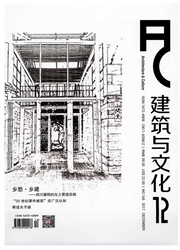

 中文摘要:
中文摘要:
明长城军事防御体系历史悠久,地域广阔,加之特殊的地理背景,内部结构及运作机制十分庞杂。过往研究多关注单一或主要元素等分析,而其作为一个有机的整体,多要素、多层次、多元化背景缺一不可,其整体属性亦应深入剖析。结合历史地理学、人类学、民族学相关理论,运用总体论方法、地图法、文献资料法等,逐层剖析明长城的系统结构与层级体系,以整体史观,着眼长城两侧明蒙双方,从文化传播、经济流通、人口迁移等方面,解读"边缘"地带的特殊机制,从而指出其表现出的层级性、防御性、流通性。
 英文摘要:
英文摘要:
As a historical, vast, diversity area, the Ming Great Wall has a complex internal structure and mechanism. Previous research mainly focus on analyzing of single or major element, and yet the Ming Great Wall is an organic whole, its properties, such as multi-element, multi-level and diverse backgrounds, is indispensable, and should be in-depth analysis. Combined with historical geography, anthropology, ethnology, etc., using the general theory methods, maps, and literature method, to analyze the Ming Great Wall system structure and hierarchy, Keeping a global historical view, focusing on both sides between Ming and ancient Mongolia, from cultural transmission, economic exchange, and migration, to interpret the special mechanisms in the defensiveness of military fortresses. Thus pointing out that Ming Great Wall is a hierarchical, defensive, liquidity zone in Ming Dynasty.
 同期刊论文项目
同期刊论文项目
 同项目期刊论文
同项目期刊论文
 期刊信息
期刊信息
